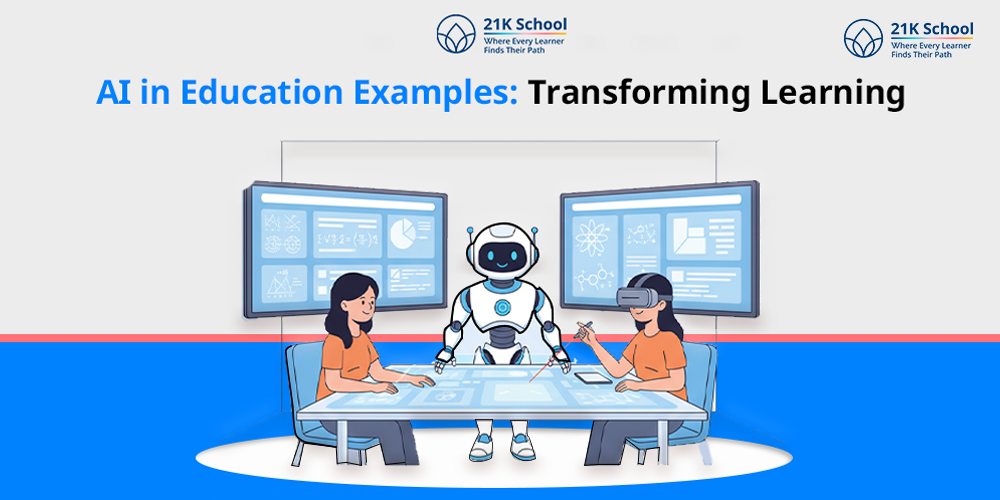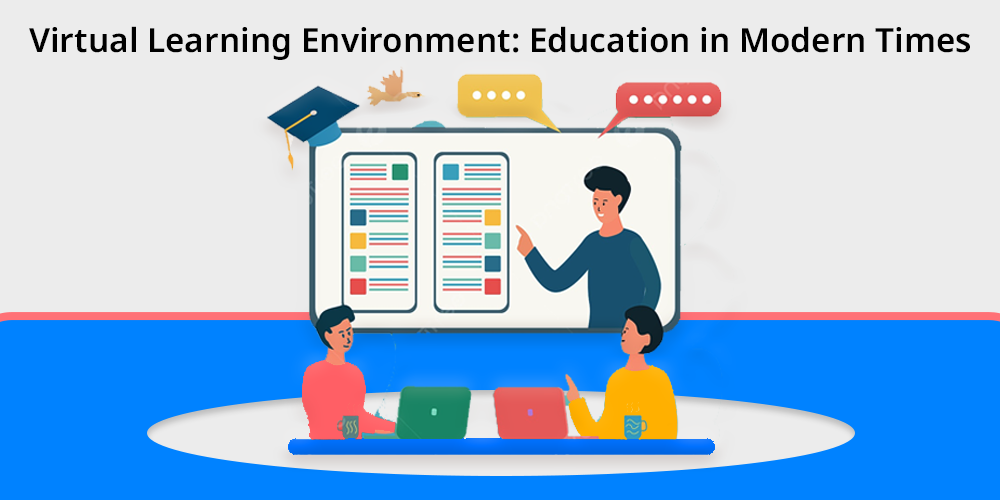
In these modern times, education has become online. Many students, schools, and teachers have preferred their mode of education through a virtual learning environment.
Virtual learning Environment has made things easier and education accessible to a large number of students. However, a supportive and positive learning environment is vital for students.
Here are some important aspects of virtual learning that you need to know.
Contents
- Virtual Learning Environment: Meaning with Example & Purposes
- Virtual Learning Environment Examples – Virtual Learning Platforms
- Types of virtual learning environments
- Importance of Virtual Learning Environment
- 1. Virtual Learning:
- 2. Personalised Education:
- 3. Accessibility:
- 4. Flexibility:
- 5. Cost:
- 6. Video Conferencing:
- 7. Assessment Tools:
- 8. Collaboration and Communication:
- 9. Access to Courses:
- 10. Enhanced Content Management:
- 11. Participation and Engagement:
- 12. Learning Materials:
- 13. Teacher-Parent Engagement:
- 14. Immediate Feedback:
- Virtual Learning Environment vs Learning Management System
- Uses of a Virtual Learning Environment
- Advantages of a Virtual Learning Environment
- Disadvantages of a Virtual Learning Environment
- Conclusion
Virtual Learning Environment: Meaning with Example & Purposes
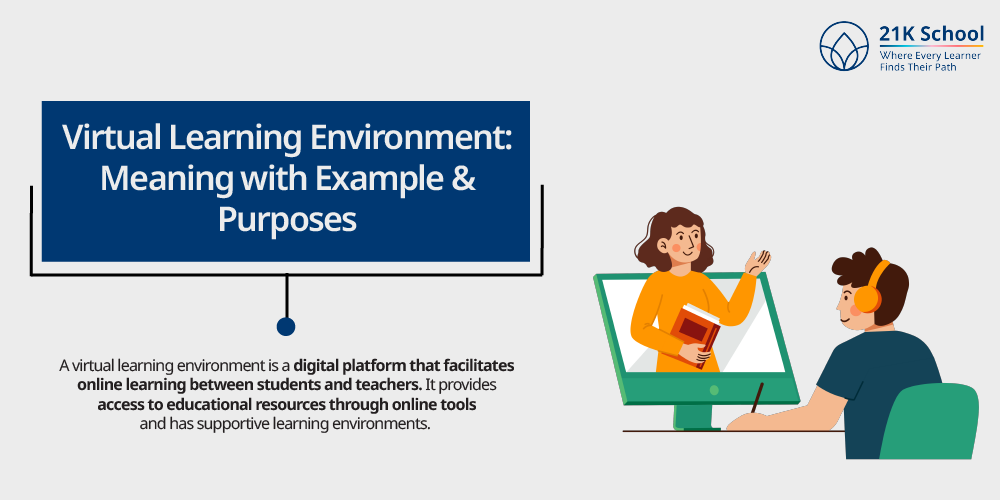
A virtual learning environment is a digital platform that facilitates online learning between students and teachers. It provides access to educational resources through online tools and has supportive learning environments.
With the help of virtual learning tools, easy and quick access to educational resources is available. With this, communication and engagement between teachers, students, and parents are also easily available.
Here are some important tips for online learning success. Read how?
Supportive learning environments, assignment submission, and test and exam conduct are accessible to students from all places.
A virtual environment can be used for various purposes, which are as follows:
- Distant learning: In distant learning, students are offered education without physical presence. They gain education with the help of online and virtual learning tools.
- Online classes: Online classes offer distance learning with the help of online tools and materials. This can be in the form of recorded and downloaded lectures, videos and learning materials.
- Videos lectures: Video lectures allow the students to watch videos and lectures with flexibility. They can get access to recorded videos and lectures whenever they require them.
- Webinars: Webinars take place in a virtual learning environment with the help of online applications. It allows students to participate in various different events on virtual platforms.
- Online courses for professional development: Online courses for professional development occur on virtual platforms. Such courses promote students’ learning and professional development through technology and virtual learning tools.
Virtual Learning Environment Examples – Virtual Learning Platforms
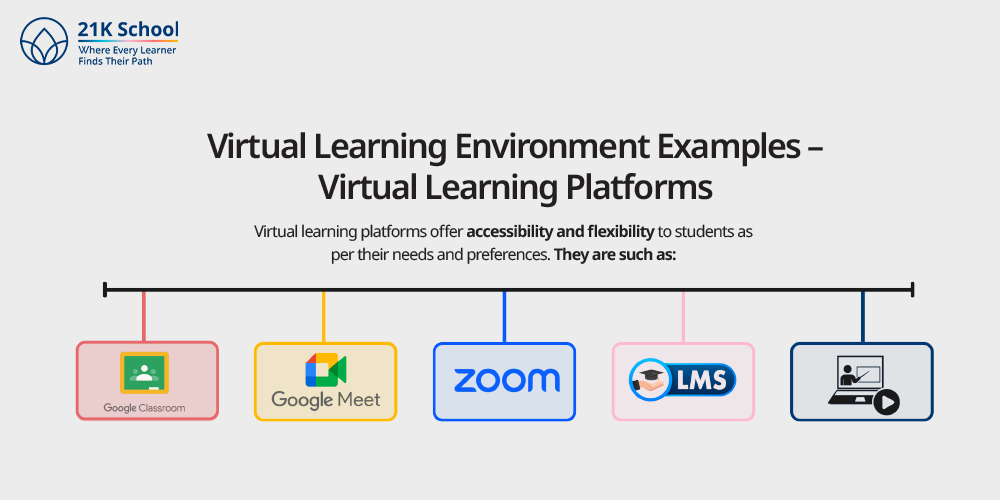
Virtual learning environments are an online platform that provides learning through a virtual medium. Examples of virtual learning environments include different virtual learning mediums that help in delivering learning via. online mode.
Virtual learning platforms are the medium through which online classes take place. These virtual learning platforms can be accessed through desktops/ computers, laptops, tablets, or mobile phones.
Virtual learning platforms offer accessibility and flexibility to students as per their needs and preferences. They are such as:
- Google classroom: Google classroom is a web- virtual learning platform which offers free classes and learning places for students with different virtual learning tools.
- Google meet: Google meet is a virtual learning platform that offers various integrated tools for teaching and learning for teachers and students at one place.
- Zoom classes: Zoom classes is an interactive virtual learning platform which engages students with different learning tools. It comes with different learning options such as live classes, screen sharing, free chats, etc.
- Learning management system: Learning management system is a software that boosts virtual learning environment in learning process and delivery. Its main task is to administer and track content and courses for student engagement.
- Online learning: Online learning has a vast aspect of delivering content and learning through virtual learning platforms and other digital means. It provides an online learning platform with learning tools for students learning.
Types of virtual learning environments
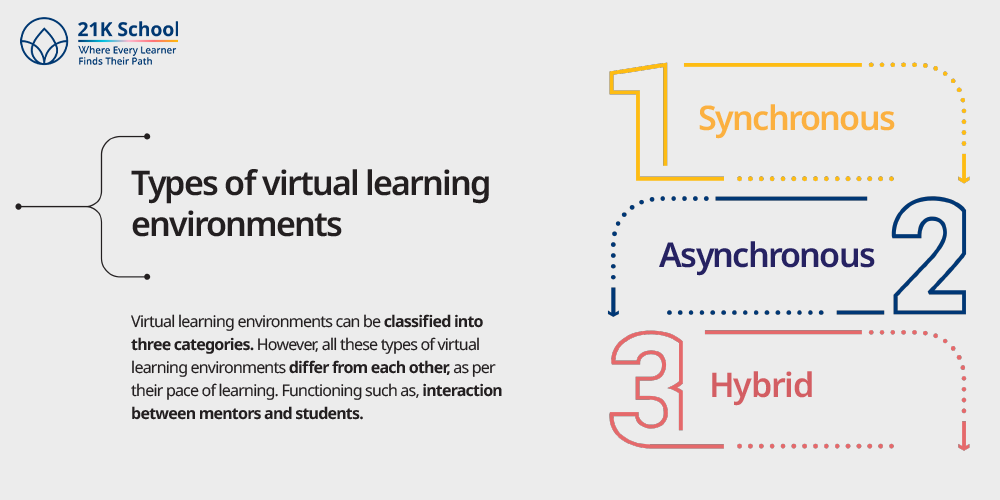
Virtual learning environments can be classified into three categories. They are as follows:
- Synchronous: Synchronous virtual learning environments include online learning time, such as live classes and sessions. Here educators and students have real- time interaction.
- Asynchronous: Asynchronous virtual learning environment includes learning sessions with pre- recorded videos and classes. Students can learn and have access to it anytime.
- Hybrid: Hybrid virtual learning environment is a combination of both synchronous and asynchronous virtual learning environments. Here, students have access to both live and pre- recorded classes and sessions.
However, all these types of virtual learning environments differ from each other, as per their pace of learning. Functioning such as, interaction between mentors and students.
Importance of Virtual Learning Environment
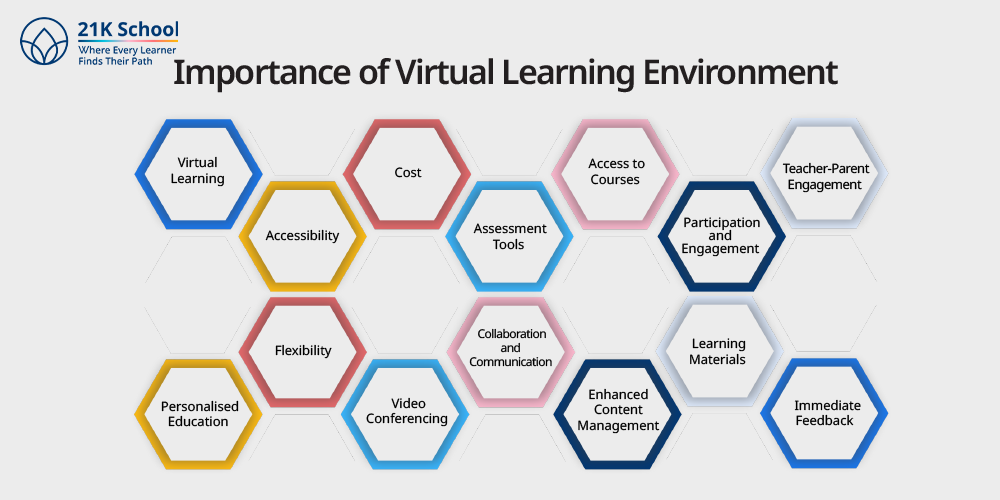
The major importance of the Virtual Learning Environment are described below. You can go through these one- by- one and know about it.
1. Virtual Learning:
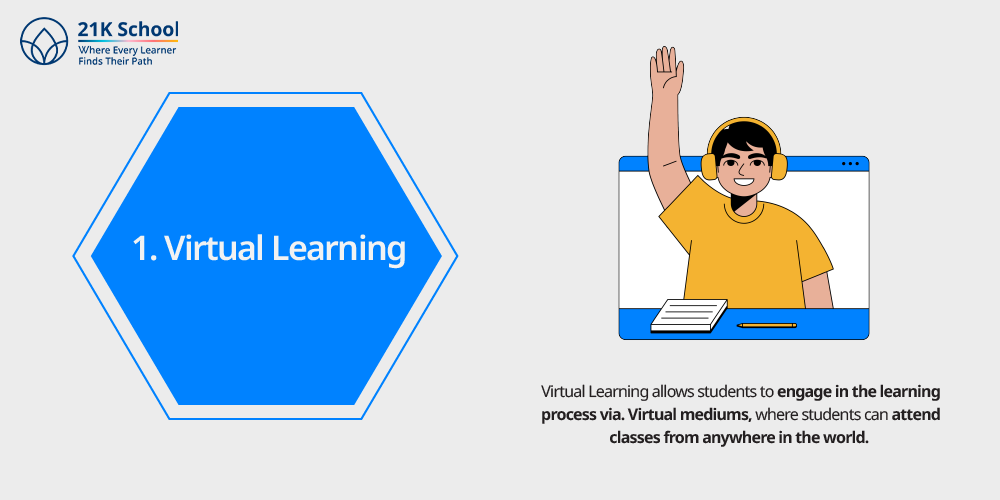
Virtual Learning allows students to engage in the learning process via. Virtual mediums, where students can attend classes from anywhere in the world.
They just need their virtual presence in the virtual classroom environment. Some of the best examples cover the virtual robotics competition.
2. Personalised Education:
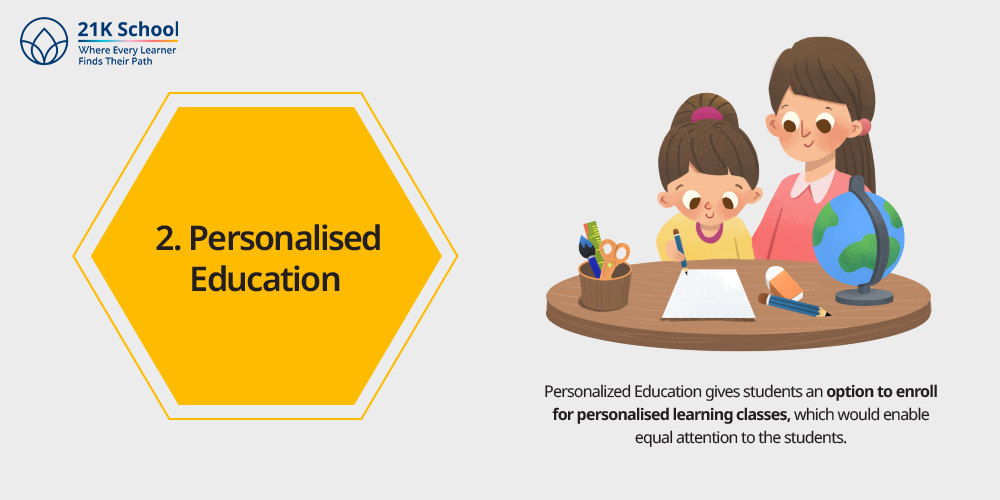
Personalized Education gives students an option to enroll for personalised learning classes, which would enable equal attention to the students. It has specific doubt session classes to hone the skills of students.
So, in case any child is weak in any subject, he or she can interact with teachers, clear their doubts and perform better.
3. Accessibility:
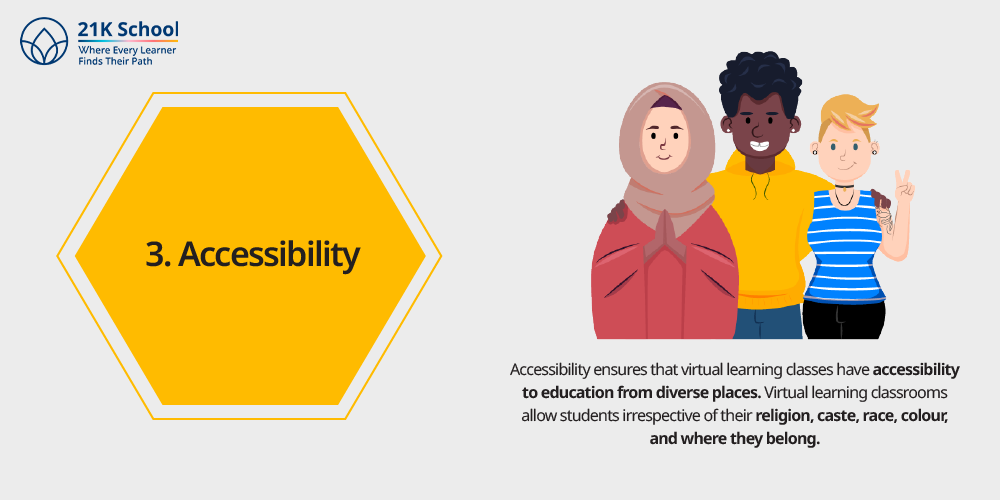
Accessibility ensures that virtual learning classes have accessibility to education from diverse places. Virtual learning classrooms allow students irrespective of their religion, caste, race, colour, and where they belong. They also have accessibility to students with special needs.
Virtual platforms have specially designed classrooms, materials, teaching, communication, and collaboration tools that facilitate education. You can learn about the benefits of collaborative learning here.
4. Flexibility:
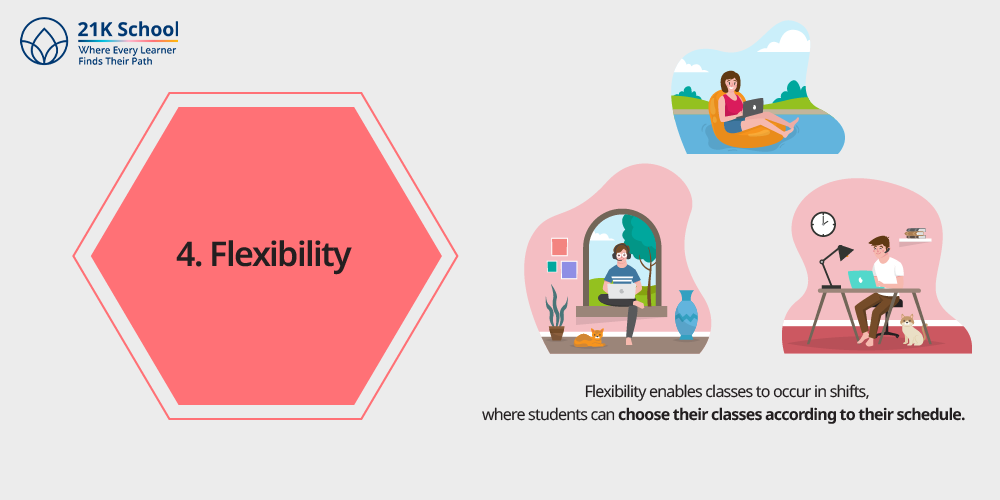
Flexibility enables classes to occur in shifts, where students can choose their classes according to their schedule. They have morning and evening classes separately, wherein you can choose any of the schedules which is convenient to you. The future of schooling is flexible and remote.
A virtual learning environment has an option to attend classes with flexible timings.
Flexibility allows parents to dedicate their time accordingly, as per their children’s schedules.
5. Cost:
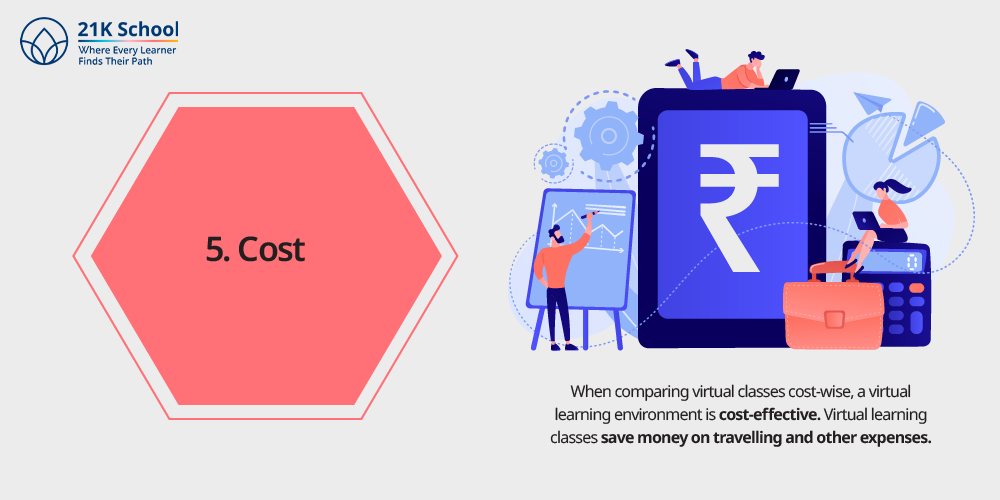
When comparing virtual classes cost-wise, a virtual learning environment is cost-effective. Virtual learning classes save money on travelling and other expenses. Read more on how online schooling is more effective and cost-effective.
Virtual learning environments cut extra expenses on children’s education and help relieve them from other issues. Learn more about addressing parents’ concerns in an online school here.
6. Video Conferencing:
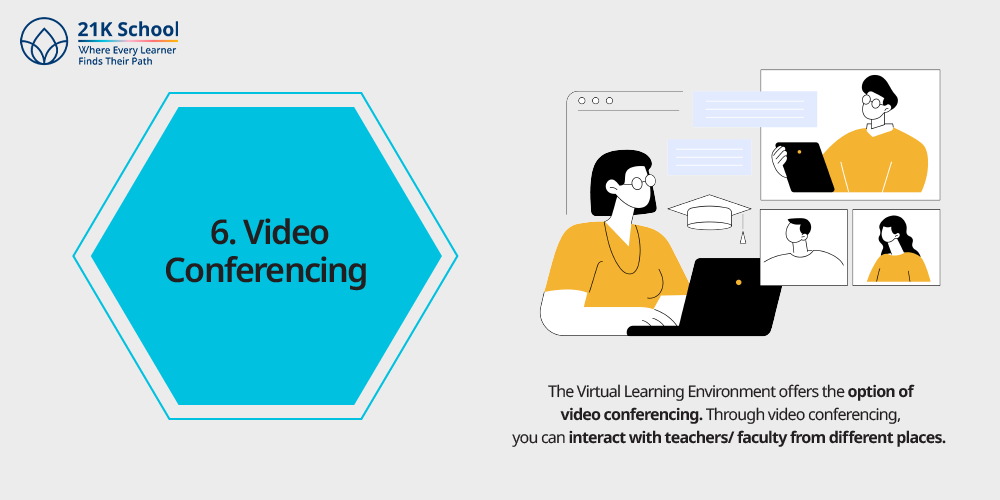
The Virtual Learning Environment offers the option of video conferencing. Through video conferencing, you can interact with teachers/ faculty from different places.
Virtual Learning Environment gives accessibility to certain features which allow students to learn via. Video conferencing. An ample amount of resources is made available to facilitate virtual learning methods.
Here you can read what makes 21k school’s online program stand out.
7. Assessment Tools:
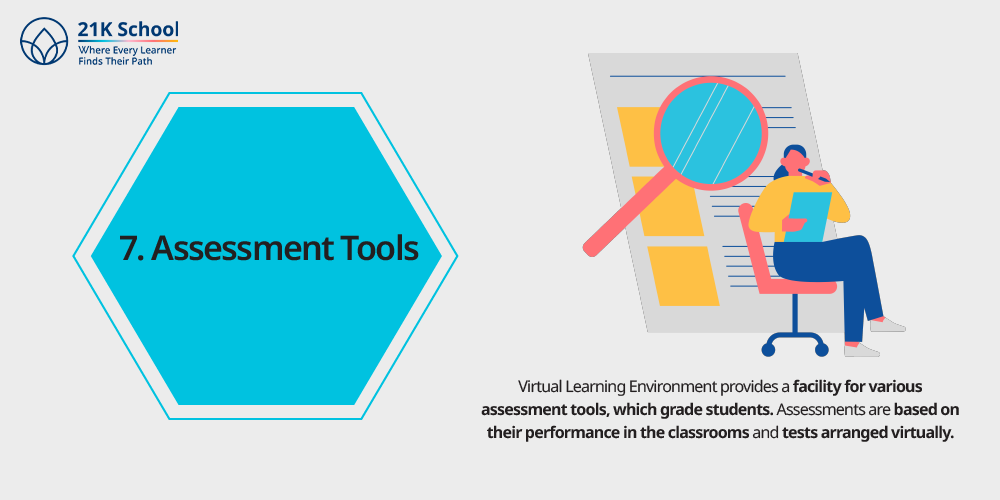
Virtual Learning Environment provides a facility for various assessment tools, which grade students. Assessments are based on their performance in the classrooms and tests arranged virtually. Different assessment tools are used to test students’ skills and calibre.
To know their performance while homeschooling, here are a few tips on how to evaluate your homeschool students’ progress.
As per this, there are two types of assessment: Formative assessment and Informative assessment. These (refer to link above) advanced strategies will help you in a holistic evaluation.
8. Collaboration and Communication:
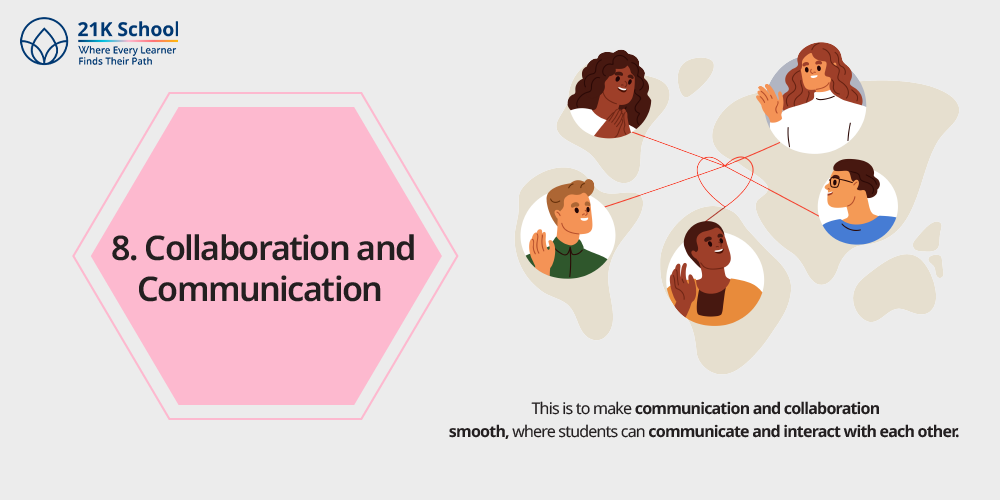
To make collaboration and communication easier, the virtual Learning environment allows different features. This is to make communication and collaboration smooth, where students can communicate and interact with each other.
Discussion and chat rooms facilitate the learning process and engage the students in learning. Collaborative tools allow students to work together on different projects.
Learn different techniques on how to survive group projects in an online school.
9. Access to Courses:
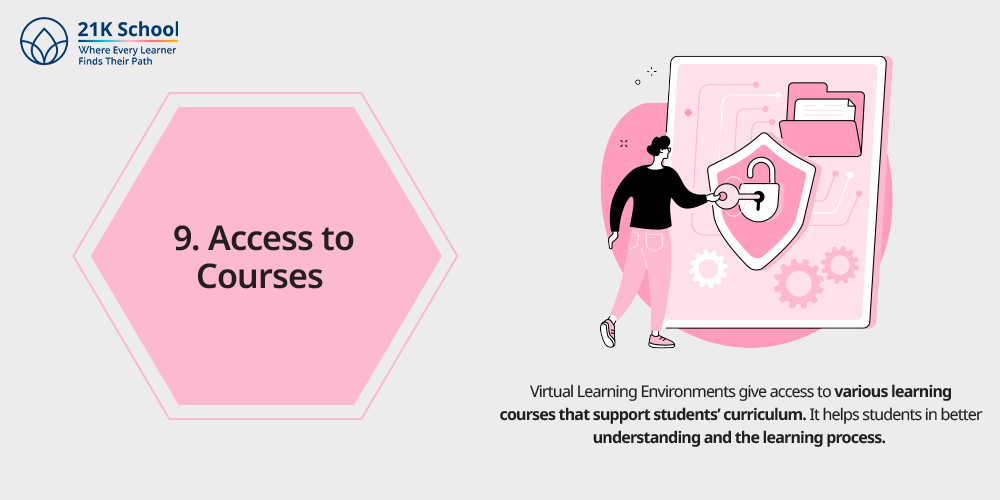
Virtual Learning Environments give access to various learning courses that support students’ curriculum. It helps students in better understanding and the learning process.
Virtual learning classrooms also have access to various online courses for professional development. Check this link to know more about the different developmental courses that you can refer to.
10. Enhanced Content Management:
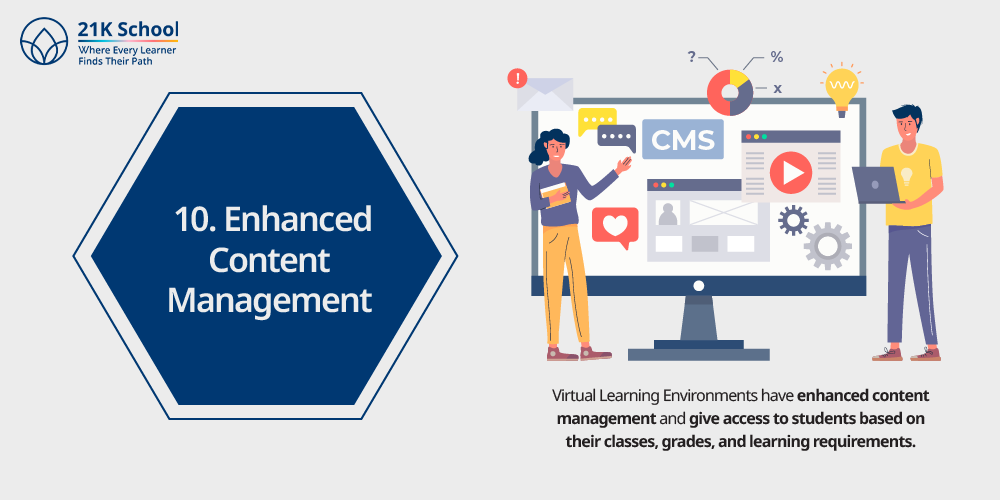
Virtual Learning Environments have enhanced content management and give access to students based on their classes, grades, and learning requirements. Various sources has been researched and made available to the students since the source of learning is virtual.
Use of technology also eases tasks of content management and segregating them according to respective classes.
11. Participation and Engagement:
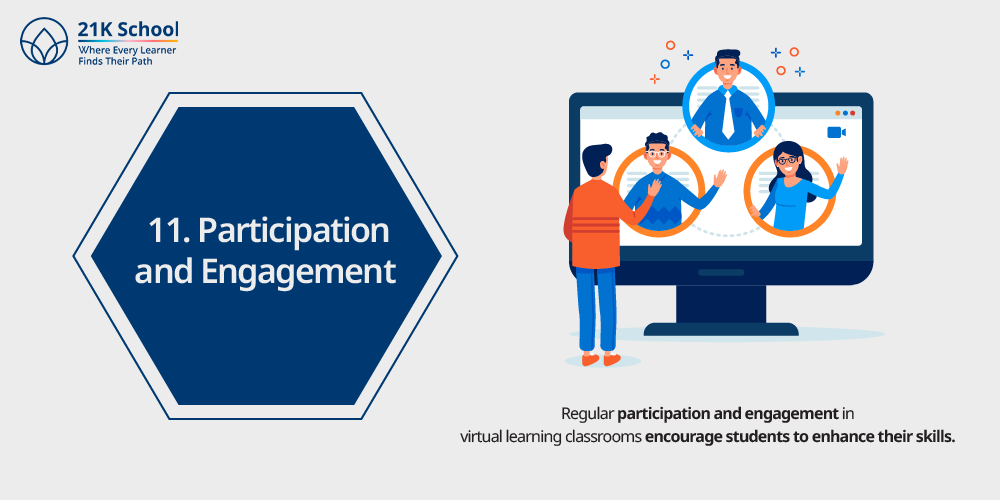
Regular participation and engagement in virtual learning classrooms encourage students to enhance their skills. Different skillful activities are arranged by the teachers to motivate them.
Such activities include quizzes and project work, fun games, or skills development activities. For example, you can go through a science project for kids for topic- rocks and minerals.
12. Learning Materials:
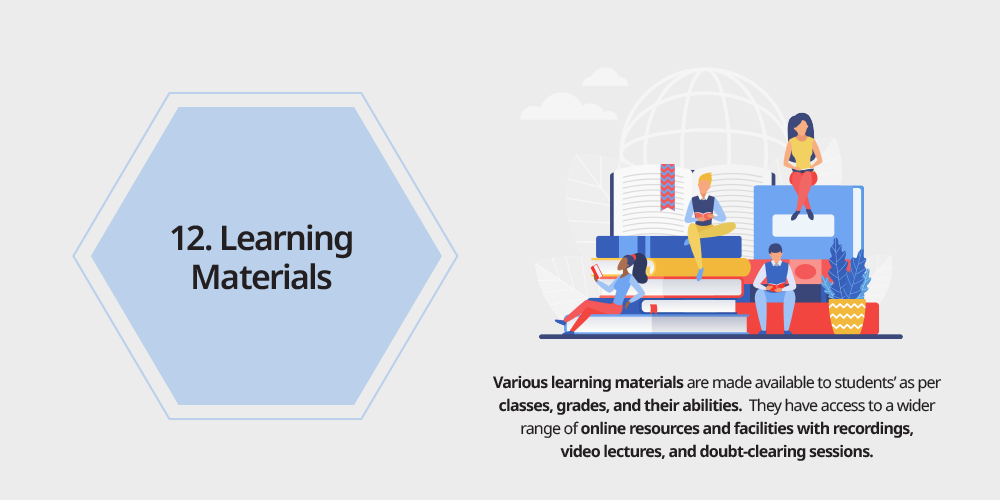
Various learning materials are made available to students’ as per classes, grades, and their abilities. They have access to a wider range of online resources and facilities with recordings, video lectures, and doubt-clearing sessions.
Learning resources are well-researched and segregated according to students’ level, and distributed among them. Here’s the benefits of Activity based learning for students.
13. Teacher-Parent Engagement:
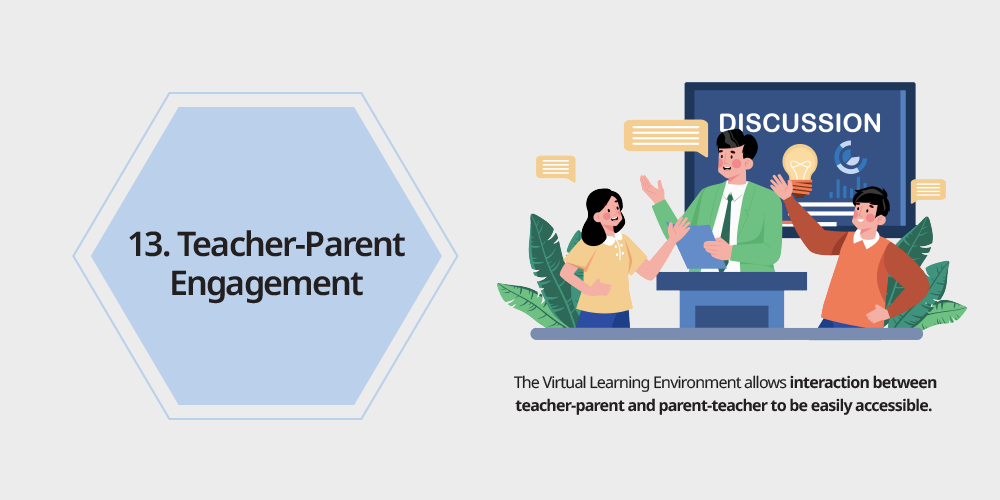
The Virtual Learning Environment allows interaction between teacher-parent and parent-teacher to be easily accessible. This allows them to have continuous interaction and check students’ progress. You can learn about the different benefits of online school for parents in 21k school.
14. Immediate Feedback:
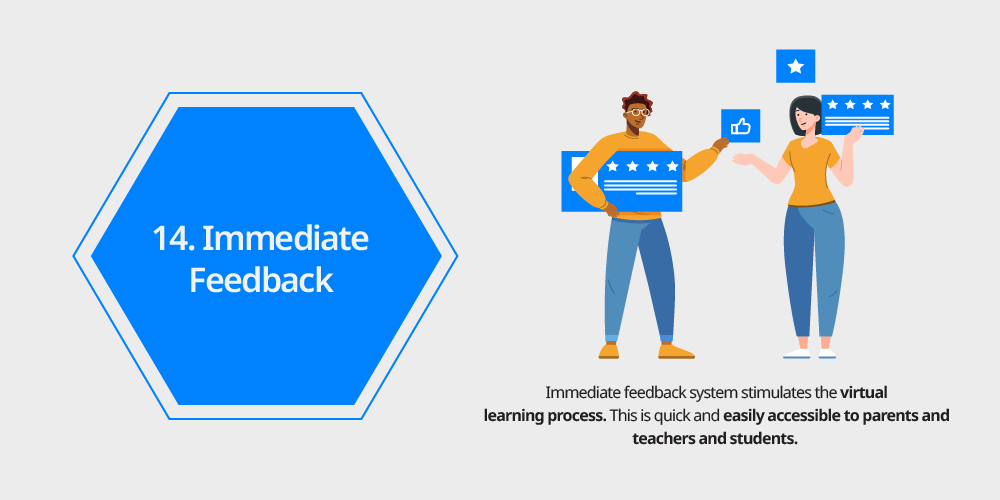
Immediate feedback system stimulates the virtual learning process. This is quick and easily accessible to parents and teachers and students.
This eases the communication between teachers and parents, parents and teachers, or teachers and students, respectively.
Virtual Learning Environment vs Learning Management System
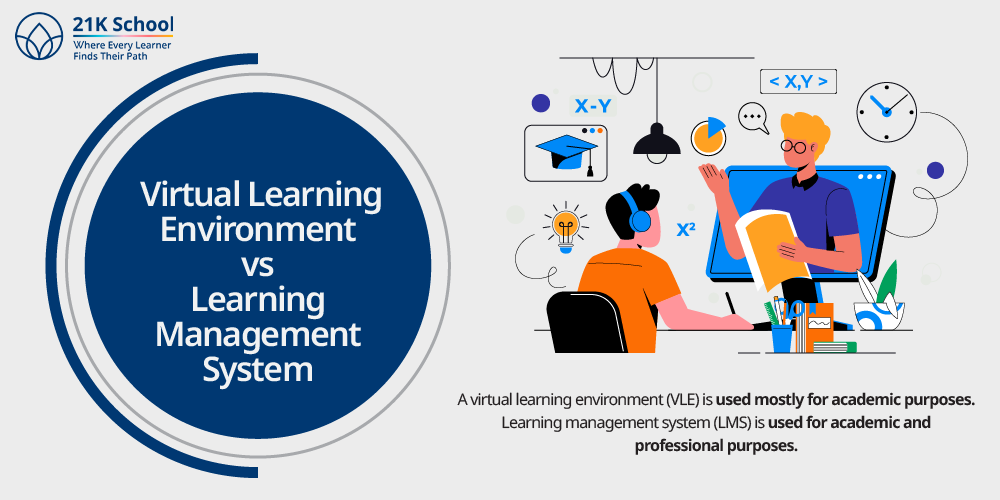
| S. no. | Parameter (Basis of distinction) | Virtual learning environment | Learning management system |
| 1. | Meaning | Virtual learning environment (VLE) aims at the overall process of learning in an online mode. | Learning management system (LMS) is an application that plans, tracks and delivers overall courses, programs and educational materials. |
| 2. | Uses | A virtual learning environment (VLE) is used mostly for academic purposes. | Learning management system (LMS) is used for academic and professional purposes. |
| 3. | Focus area | Virtual learning environment focuses on learning and education | Learning management systems focus on administration and tracking of courses and training. |
| 4. | Learning aspects | Virtual learning environment is a broader aspect realised using software, applications, and platforms. | Learning management systems are limited to particular software. |
| 5. | Target | Virtual learning management is for student engagement. | Learning management system is for course engagement. |
Uses of a Virtual Learning Environment
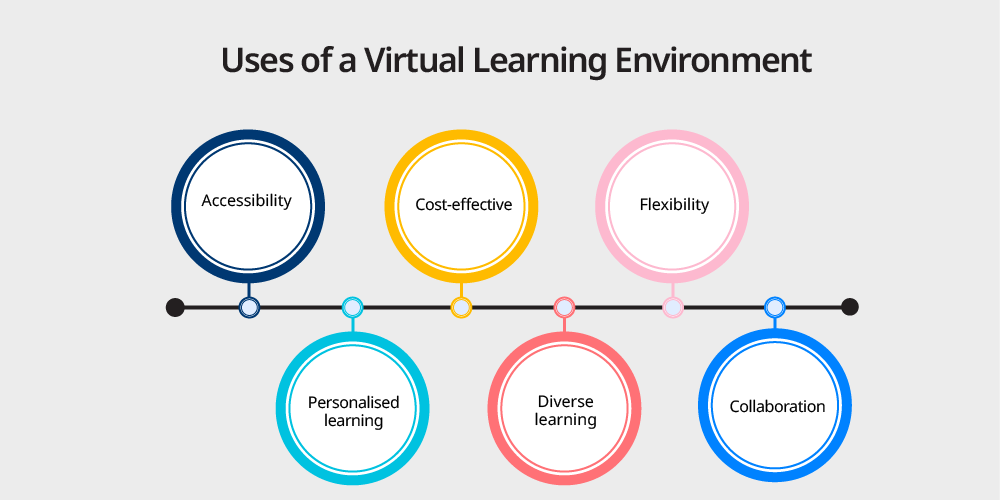
The uses of virtual learning environments are such as:
- Accessibility: Virtual learning environments allow accessibility of learning to students from anywhere in the world. Students can have access to their learnings, from all over the world. They can have virtual classes through an online medium or virtual learning platforms.
- Cost- effective: Virtual learning environments are cost-effective since they reduce other costs such as courses, travelling, materials, etc.
- Flexibility: The virtual learning environment allows students flexible timings and space. Students can attend classes at their own time and place, removing limitations and restrictions.
- Personalised learning: Personalised learning environment offers personalised learning to students depending on their schedule, time and space or place. It invites everyone to learn.
- Diverse learning: Virtual learning environment allows students to get access to diverse environments, virtually. Students can meet different learning faculties and get acquainted with different learning.
- Collaboration: Virtual learning environments enhance collaborative learning with the help of online tools. Virtual learning environment facilitates discussions, connections and promotes interactions among students.
Advantages of a Virtual Learning Environment
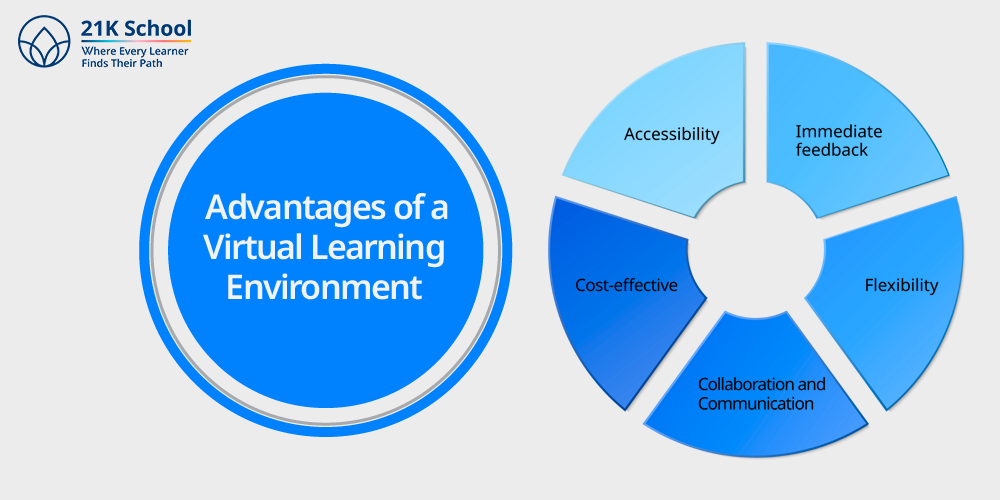
Virtual learning environment has numerous benefits that are as follows:
- Accessibility: Virtual learning environment provides accessibility to students for a wider range. It removes barriers in education such as geographical limitations, mobility, personalized learning, group projects, etc.
- Flexibility: Students have flexibility in attending classes, events, discussions and projects. Here, the virtual learning environment gives students the flexibility to learn online.
- Cost-effective: Virtual classes are cost-effective since there are no extra expenses of travelling and other expenses. It is cost-effective and cheaper than regular classes.
- Collaboration and Communication: Virtual learning environments enhance collaboration and communication through discussions, interactions and projects among teachers and students.
- Immediate feedback: Virtual learning has an option of sending immediate feedback, making the learning process fast and easy. Quick feedback speeds up the learning process and makes discussion easy between teachers and students.
Disadvantages of a Virtual Learning Environment
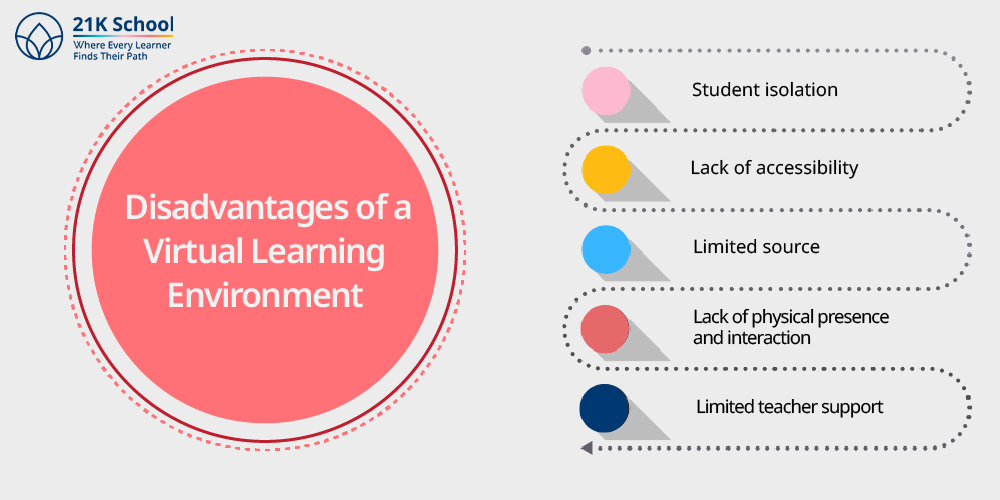
Virtual learning classes ease students in many ways, despite that it has some challenges. Here are these challenges or disadvantages of virtual learning environments:
- Student isolation: While a virtual learning environment may serve learning regardless of geographical limitations, it is distant. It avoids physical contact or close social interactions between peer groups and teachers.
- Lack of accessibility: Lack of technology, technical error, and no proper internet connection can lead to failure in virtual learning. Means of internet connection is required in a virtual learning system. Bad technology and technical difficulties lead to problems in attending virtual classes.
- Limited source: A virtual learning environment has limited sources for learning. Since it’s online and access to learning depends upon availability and accessibility, sources become limited for students.
- Lack of physical presence and interaction: Due to the virtual environment, students do not have access to meet each other, physically. Due to lack of physical presence and interaction, many other problems occur such as, overall development, better communication, etc.
- Limited teacher support: Lack of teacher support and training can majorly hamper students’ learning. Limited support from the teacher side becomes challenging for students, hindering their educational program.
Conclusion
Virtual Learning Environment makes learning easy, quick, and accessible to all students, regardless of their time and location. The Virtual Learning Environment has a global reach to students.
Virtual Learning Environment is accessible to students as well who have unique learning needs and need flexibility or special training.
With various benefits of online learning, there come certain challenges to online classes as well. Coming to this, we face both advantages of a virtual learning environment and disadvantages of a virtual learning environment.
Many times, there are chances to get misused, which need to be checked.
However, in these modern times, the virtual learning environment makes online learning cost-effective and accessible to all. It allows students from all places to come together and interact with each other.

